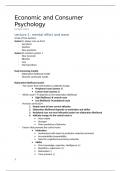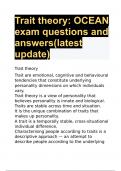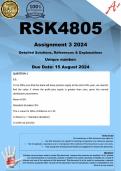College aantekeningen
All lecture notes Economic and Consumer Psychology (6463PS008Y)
- Instelling
- Universiteit Leiden (UL)
Notes of all the 8 lectures of Economic and Consumer Psychology by Dr. Marco van Bommel. Based on Thinking fast and Slow By Daniel Kahneman.
[Meer zien]














